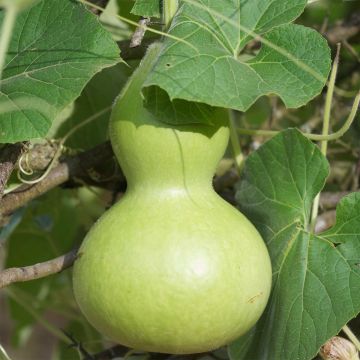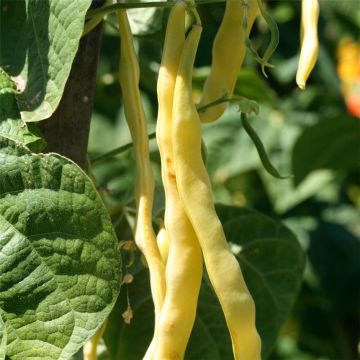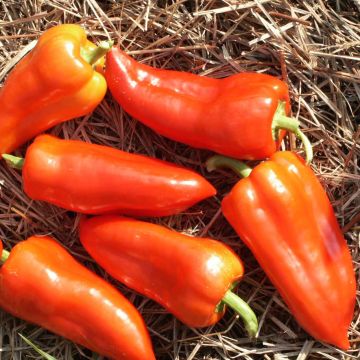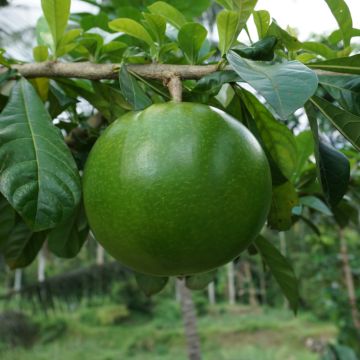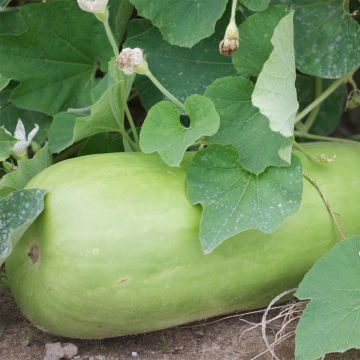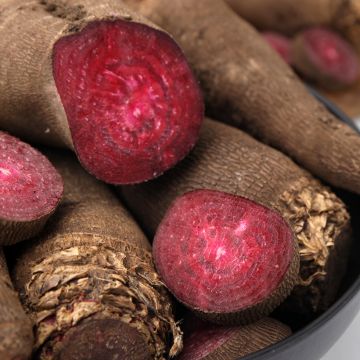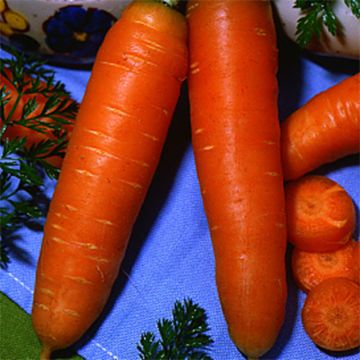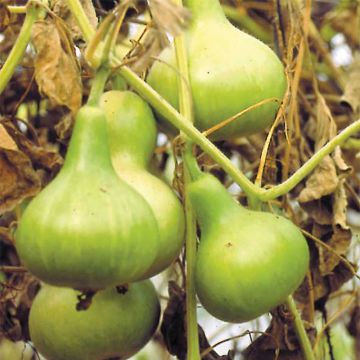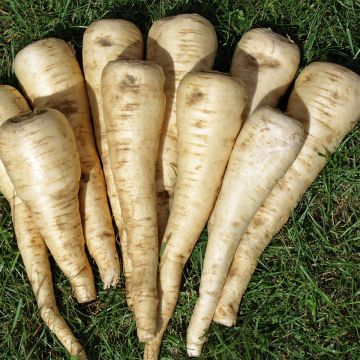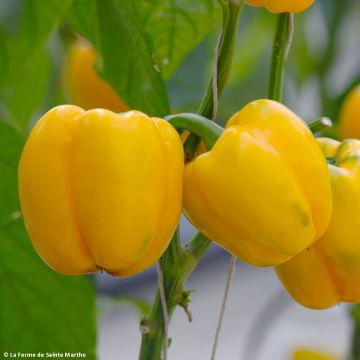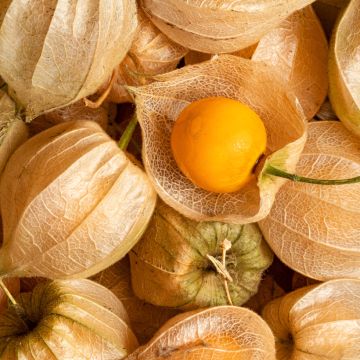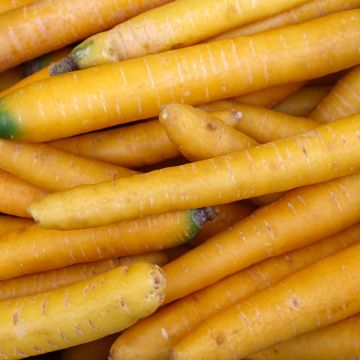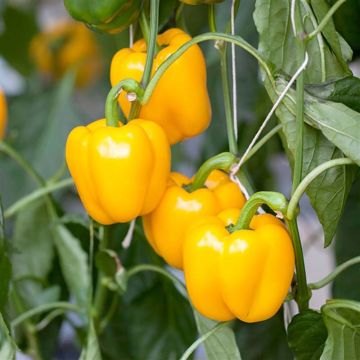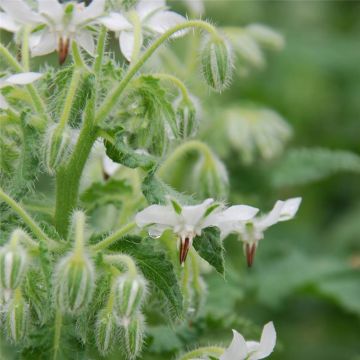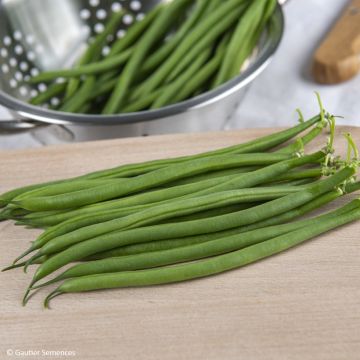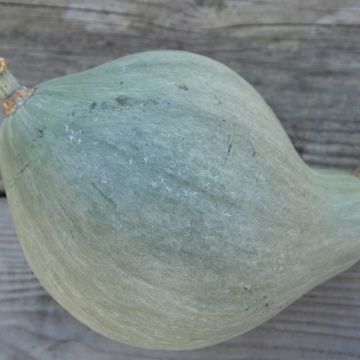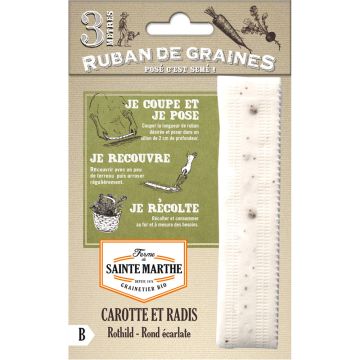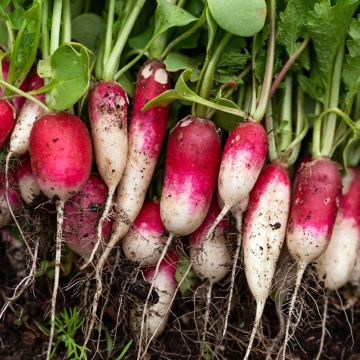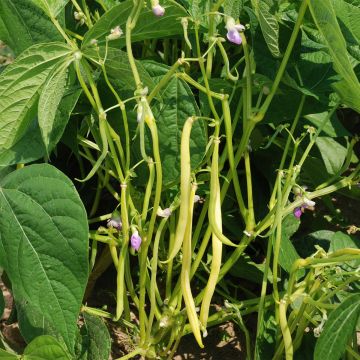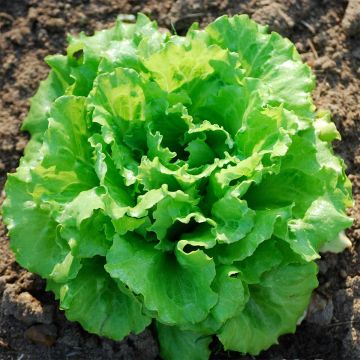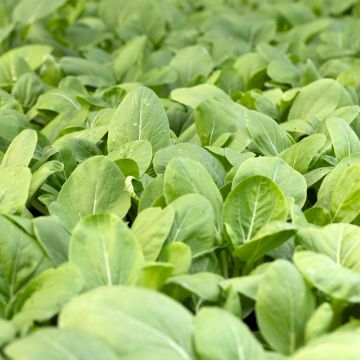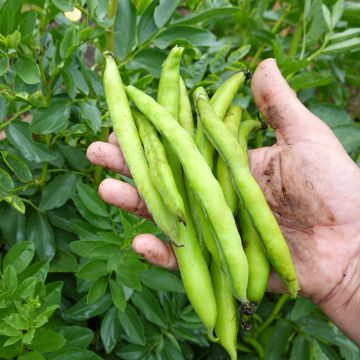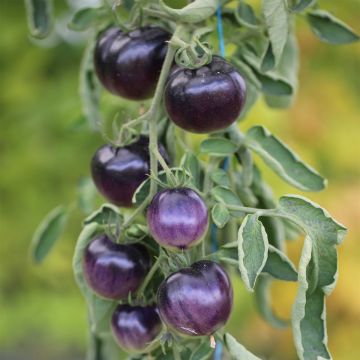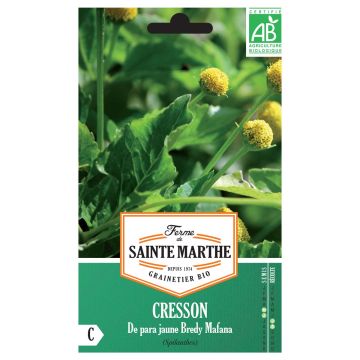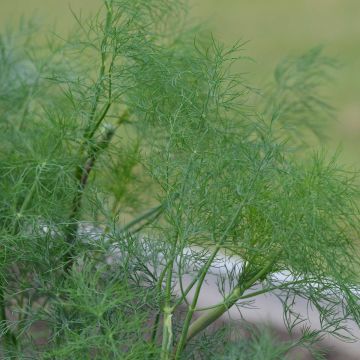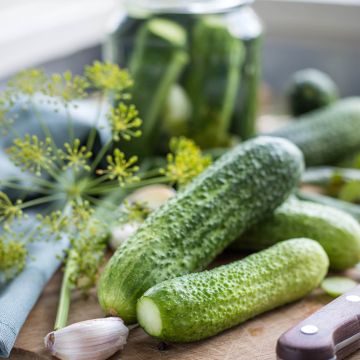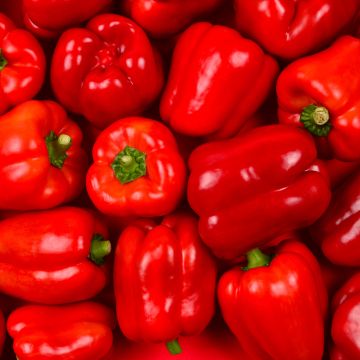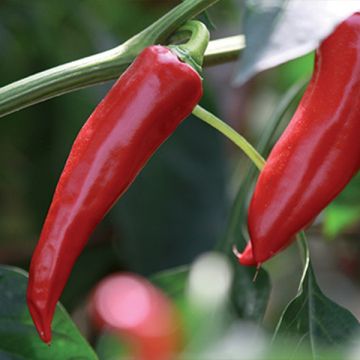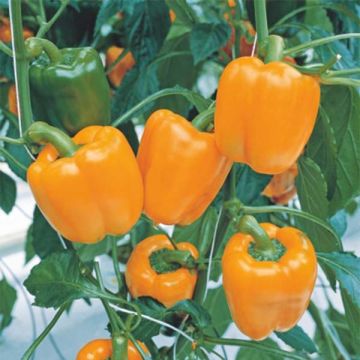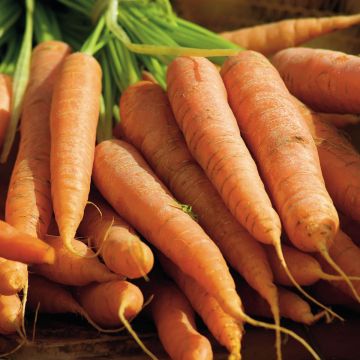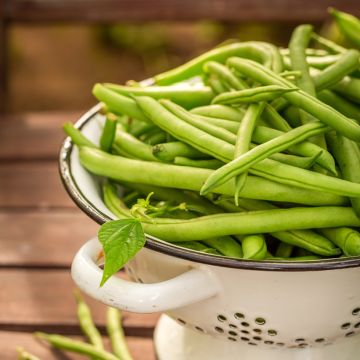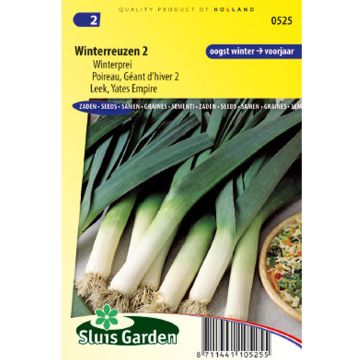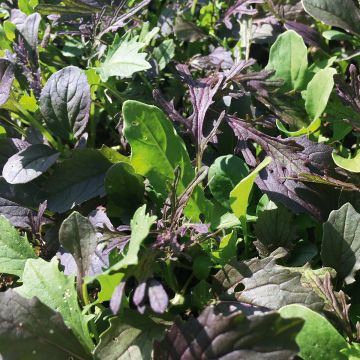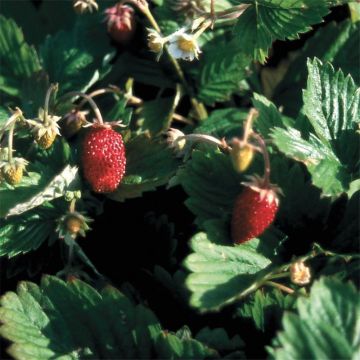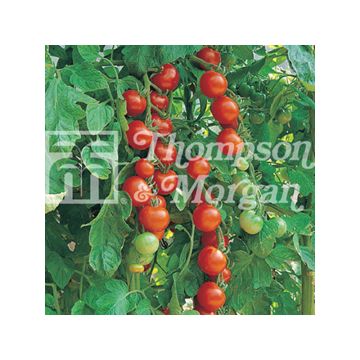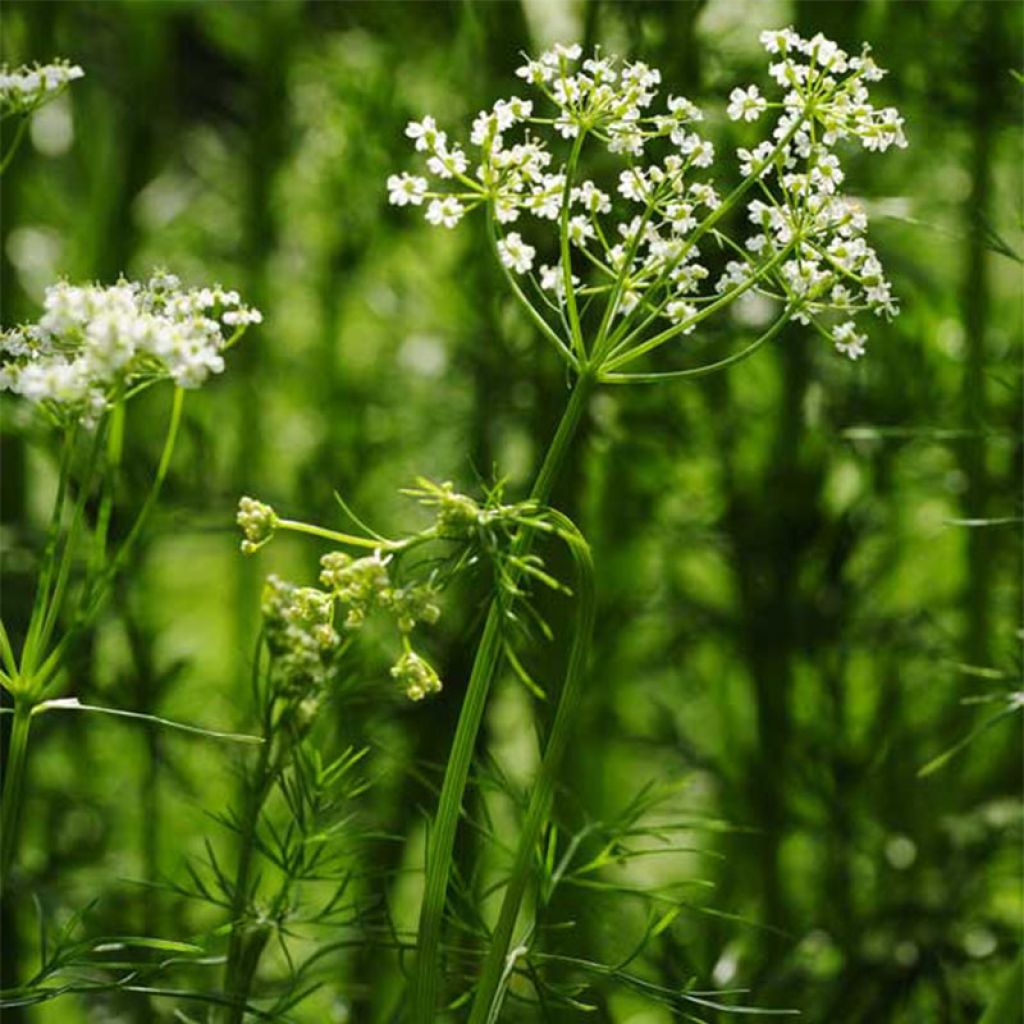

Cumin AB - Ferme de Ste Marthe


Cumin AB - Ferme de Ste Marthe
Organic Cumin - Ferme de Saine Marthe seeds - Cuminum cyminum
Cuminum cyminum
Cumin
Why not try an alternative variety in stock?
View all →This plant carries a 6 months recovery warranty
More information
We guarantee the quality of our plants for a full growing cycle, and will replace at our expense any plant that fails to recover under normal climatic and planting conditions.
Seed-only orders are dispatched by sealed envelope. The delivery charge for seed-only orders is €3.90.
Description
Cumin is a herbaceous medicinal plant with an upright habit, reaching a height of 30cm (12in). Its foliage is dark green and its leaves are thread-like. Its white flowers give rise to ovoid seeds, which are brownish-grey in colour, measuring 5-6mm (0in) and are highly aromatic, used in cooking. Sow from February to May. Harvest from July to September. These seeds come from Organic Agriculture.
Originally from the Near East, cumin thrives best in sunny conditions and under a warm and sunny climate. It is known by several names, the most common of which are "white cumin" or "Moroccan cumin". It is also nicknamed "false anise" due to the smell and flavour of its seeds, which can resemble anise. The fruits are covered in hairs and become dry at maturity, emitting a delicate fragrance. They produce a single cumin seed that resembles caraway seeds, which they are sometimes confused with: cumin seeds are lighter and consist of two cups. Cumin is generally used in traditional spice blends (Mexican chilli, Indian Garam masala, North African Ras-el-hanout). In Europe, it is used alone in breads and cheeses, on grilled meats and pastries.
In addition to its aromatic properties, cumin has medicinal qualities: it aids digestion when consumed at the end of a meal.
Harvest: 3 to 4 months after sowing, harvest the seeds as they ripen, which is when the pods turn brown in colour.
Storage: before use, dry the seeds. Keep them in an airtight jar in a cool, dry place, away from light. Storage: whole seeds for 1 year; ground seeds for 1 to 2 months.
Gardener's tip: cumin is a very resistant plant. However, it can be susceptible to attacks from slugs and snails. To get rid of them, consider using Ferramol, which is a slug control product that can be used in Organic Agriculture as it is safe for both flora and fauna.
Report an error about the product description
Harvest
Plant habit
Foliage
Botanical data
Cuminum
cyminum
Apiaceae
Cumin
Cultivar or hybrid
Annual
Other Sainte Marthe farm
Planting and care
Sowing:
In open ground, when the soil has reached a minimum of 12 °C, sow it in a sunny location, if possible sheltered from the wind. The soil must be loose, well-drained and rich in humus.
In a pot, place gravel or clay balls at the bottom to ensure drainage. Place the pot in a warm place. After mid-May, you can place the pot outside or transplant the young plant in open ground.
In any case, thin out the young plants by separating them by 20 to 30cm (8 to 12in).
Cultivation:
Cumin does not require any particular maintenance. Remember to water at the base in case of severe drought.
Seedlings
Care
Intended location
This item has not been reviewed yet - be the first to leave a review about it.
Vegetable seeds
Haven't found what you were looking for?
Hardiness is the lowest winter temperature a plant can endure without suffering serious damage or even dying. However, hardiness is affected by location (a sheltered area, such as a patio), protection (winter cover) and soil type (hardiness is improved by well-drained soil).

Photo Sharing Terms & Conditions
In order to encourage gardeners to interact and share their experiences, Promesse de fleurs offers various media enabling content to be uploaded onto its Site - in particular via the ‘Photo sharing’ module.
The User agrees to refrain from:
- Posting any content that is illegal, prejudicial, insulting, racist, inciteful to hatred, revisionist, contrary to public decency, that infringes on privacy or on the privacy rights of third parties, in particular the publicity rights of persons and goods, intellectual property rights, or the right to privacy.
- Submitting content on behalf of a third party;
- Impersonate the identity of a third party and/or publish any personal information about a third party;
In general, the User undertakes to refrain from any unethical behaviour.
All Content (in particular text, comments, files, images, photos, videos, creative works, etc.), which may be subject to property or intellectual property rights, image or other private rights, shall remain the property of the User, subject to the limited rights granted by the terms of the licence granted by Promesse de fleurs as stated below. Users are at liberty to publish or not to publish such Content on the Site, notably via the ‘Photo Sharing’ facility, and accept that this Content shall be made public and freely accessible, notably on the Internet.
Users further acknowledge, undertake to have ,and guarantee that they hold all necessary rights and permissions to publish such material on the Site, in particular with regard to the legislation in force pertaining to any privacy, property, intellectual property, image, or contractual rights, or rights of any other nature. By publishing such Content on the Site, Users acknowledge accepting full liability as publishers of the Content within the meaning of the law, and grant Promesse de fleurs, free of charge, an inclusive, worldwide licence for the said Content for the entire duration of its publication, including all reproduction, representation, up/downloading, displaying, performing, transmission, and storage rights.
Users also grant permission for their name to be linked to the Content and accept that this link may not always be made available.
By engaging in posting material, Users consent to their Content becoming automatically accessible on the Internet, in particular on other sites and/or blogs and/or web pages of the Promesse de fleurs site, including in particular social pages and the Promesse de fleurs catalogue.
Users may secure the removal of entrusted content free of charge by issuing a simple request via our contact form.
The flowering period indicated on our website applies to countries and regions located in USDA zone 8 (France, the United Kingdom, Ireland, the Netherlands, etc.)
It will vary according to where you live:
- In zones 9 to 10 (Italy, Spain, Greece, etc.), flowering will occur about 2 to 4 weeks earlier.
- In zones 6 to 7 (Germany, Poland, Slovenia, and lower mountainous regions), flowering will be delayed by 2 to 3 weeks.
- In zone 5 (Central Europe, Scandinavia), blooming will be delayed by 3 to 5 weeks.
In temperate climates, pruning of spring-flowering shrubs (forsythia, spireas, etc.) should be done just after flowering.
Pruning of summer-flowering shrubs (Indian Lilac, Perovskia, etc.) can be done in winter or spring.
In cold regions as well as with frost-sensitive plants, avoid pruning too early when severe frosts may still occur.
The planting period indicated on our website applies to countries and regions located in USDA zone 8 (France, United Kingdom, Ireland, Netherlands).
It will vary according to where you live:
- In Mediterranean zones (Marseille, Madrid, Milan, etc.), autumn and winter are the best planting periods.
- In continental zones (Strasbourg, Munich, Vienna, etc.), delay planting by 2 to 3 weeks in spring and bring it forward by 2 to 4 weeks in autumn.
- In mountainous regions (the Alps, Pyrenees, Carpathians, etc.), it is best to plant in late spring (May-June) or late summer (August-September).
The harvesting period indicated on our website applies to countries and regions in USDA zone 8 (France, England, Ireland, the Netherlands).
In colder areas (Scandinavia, Poland, Austria...) fruit and vegetable harvests are likely to be delayed by 3-4 weeks.
In warmer areas (Italy, Spain, Greece, etc.), harvesting will probably take place earlier, depending on weather conditions.
The sowing periods indicated on our website apply to countries and regions within USDA Zone 8 (France, UK, Ireland, Netherlands).
In colder areas (Scandinavia, Poland, Austria...), delay any outdoor sowing by 3-4 weeks, or sow under glass.
In warmer climes (Italy, Spain, Greece, etc.), bring outdoor sowing forward by a few weeks.

































